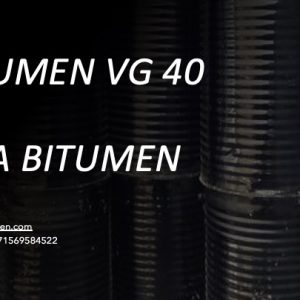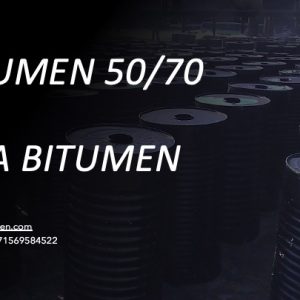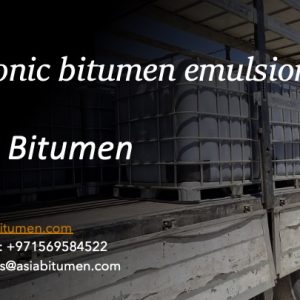Anionic Bitumen emulsion bitumen all grades are available please share with our sales team by WhatsApp or Email your inquiries.
ANIONIC BITUMEN EMULSION
Description
Anionic bitumen emulsion is a type of bitumen emulsion in which the bitumen particles are negatively charged (anions). It is a widely used material in road construction and maintenance, particularly for applications such as surface dressing, tack coats, and cold mix asphalts.
Composition
- Bitumen: The primary binding material, typically constituting 40–70% of the emulsion.
- Water: Acts as the dispersion medium.
- Emulsifier: An anionic surfactant, which stabilizes the emulsion by giving the bitumen particles a negative charge.
- Additives (optional): May include stabilizers, wetting agents, or pH adjusters to improve performance.
Characteristics
- Negative Charge: The bitumen particles carry a negative charge, which makes them interact effectively with positively charged aggregates.
- pH: Anionic emulsions generally have a pH above 7 (alkaline).
- Stability: Suitable for areas with low to moderate temperatures and environments where acidic aggregates are used.
- Curing: Breaks or sets when water evaporates or is absorbed, leaving a layer of bitumen to bind the aggregate.
Grades of Anionic Bitumen emulsion:
- SS-1
- SS-1h
- QS-1h
- MS-1
- HFMS-1
- HFMS-2
- RS-1
- RS-2
- HFRS-2
Applications
- Surface Dressing: For sealing and waterproofing road surfaces.
- Tack Coats: To provide adhesion between layers of asphalt.
- Cold Mix Asphalt: Used in mixing with aggregates for road construction in cold conditions.
- Dust Suppression: Applied to unpaved roads to reduce dust.
Advantages
- Environmentally friendly, as it uses water as the dispersion medium instead of solvents.
- Reduces the need for heating, saving energy and lowering emissions.
- Versatile and can be used with a wide range of aggregates.
Limitations
- Not suitable for use with aggregates that are negatively charged, as they may repel the negatively charged bitumen particles.
- Sensitive to pH and may require adjustment during preparation.
Preparation Process
- The bitumen is emulsified using a high-shear colloid mill with water and an anionic emulsifier.
- The pH is adjusted to maintain alkalinity.
- Stabilizers or additives are included as needed to enhance storage and application performance.
Anionic bitumen emulsions are particularly useful in specific geographies and applications where their compatibility with aggregate types and local conditions make them a preferred choice.





Reviews
There are no reviews yet.